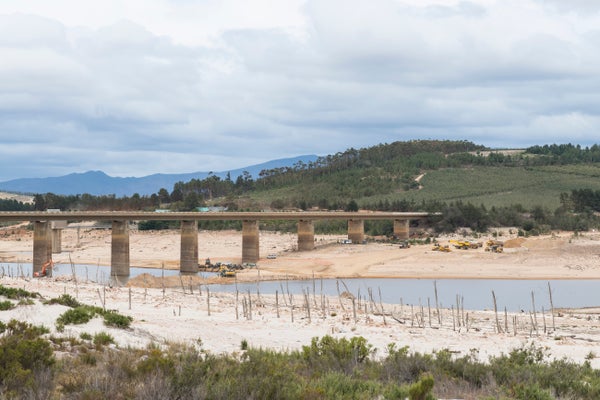After dozens of people were killed by flooding in the central United States over the past week, the question looms: How can communities better prepare for the next time?
The answers are difficult.
A new study warns that unprecedented events — disasters so extreme that communities haven’t experienced anything like them before — are stymieing attempts to prepare for them. Risk management strategies based on past climate norms are no longer effective for a more extreme future.
On supporting science journalism
If you're enjoying this article, consider supporting our award-winning journalism by subscribing. By purchasing a subscription you are helping to ensure the future of impactful stories about the discoveries and ideas shaping our world today.
The paper comes as areas of St. Louis, central Illinois and southeastern Kentucky are still reeling from record-setting downpours and deadly flash floods. At least 37 people died last week in Kentucky from what scientists described as a history-making 1,000-year flood that left 40 bridges damaged or inaccessible.
The research, published yesterday in the journal Nature, looks at instances of extreme droughts and floods around the world. It focused on places that experienced two disasters in the same location, separated by a number of years, to find out whether communities were able to better prepare for the second event after the first.
The researchers found that implementing risk management strategies improved outcomes the second time around. The exception was when the second event was significantly more severe than the first, exposing the community to threats it hadn’t experienced before.
In these cases, attempts to prepare seemed to fall short.
For instance, Cape Town, South Africa, suffered a severe drought in 2003 and 2004. In later years, the city installed a new dam on the nearby Berg River to store up more winter rainfall and implemented other strategies to deal with future water shortages, like water use restrictions and public information campaigns.
But when another drought set in more than a decade after the first, it sent the city into a full-fledged water crisis. The event was so severe, so much more extreme than previous droughts, that earlier preparations fell short.
By 2017, Cape Town was preparing for the possibility of hitting so-called Day Zero, the point at which reservoir levels fall so low that extreme restrictions are triggered, including shutting off many municipal water supplies. While the city ultimately avoided a Day Zero scenario, largely through tight water rationing, the drought dragged on for several years afterward.
It happens with extreme floods, too, the research notes. Heavy rainfall and flash floods overwhelmed the sewer systems in the Swedish city of Malmö in 2014, despite attempts to prepare after an earlier, but less severe, flooding event just a few years prior.
The problem is twofold. Older infrastructure isn’t designed for unprecedented extremes — that means it’s likely to fail, despite all other attempts to prepare for floods and droughts. At the same time, communities often design their risk-management strategies in the wake of disasters that have already happened, rather than attempting to plan for the future.
The researchers also warn that some risk-management strategies can actually backfire in unexpected ways. If communities build levees or other infrastructure designed to keep floodwaters at bay, it could encourage more people to settle in floodplains. That’s a particular problem if the levees later fail during an unprecedented event.
Altogether, the researchers found only two examples in which risk management strategies reduced the impact of a second disaster, even when it was far more extreme than the first. These included floods in Germany and Austria in 2013 and floods in Barcelona in 2018.
These success stories included high investments in both structural improvements, like new sewer plants, and other design components, like stricter building codes. They also involved significant improvements to early warning systems, emergency response plans, and collaborations with other local or national governments.
In a comment on the new study, also published yesterday in Nature, researchers Beth Tellman and Hallie Eakin noted that adaptation efforts must also address systemic inequalities in society to be truly effective.
Numerous studies have revealed that people of color and people with low incomes are more vulnerable to the impacts of extreme weather events than other populations.
“In facing these challenges, it is not risk management that is needed, but rather transformation,” Tellman and Eakin suggest. “There is an urgent need to correct the underlying sociopolitical inequities that increase vulnerability and exposure. Those responsible for managing risk must also do more than learn from the past, but should rather anticipate and adapt to the prospect of an increasingly hazardous future.”
Reprinted from E&E News with permission from POLITICO, LLC. Copyright 2022. E&E News provides essential news for energy and environment professionals.
